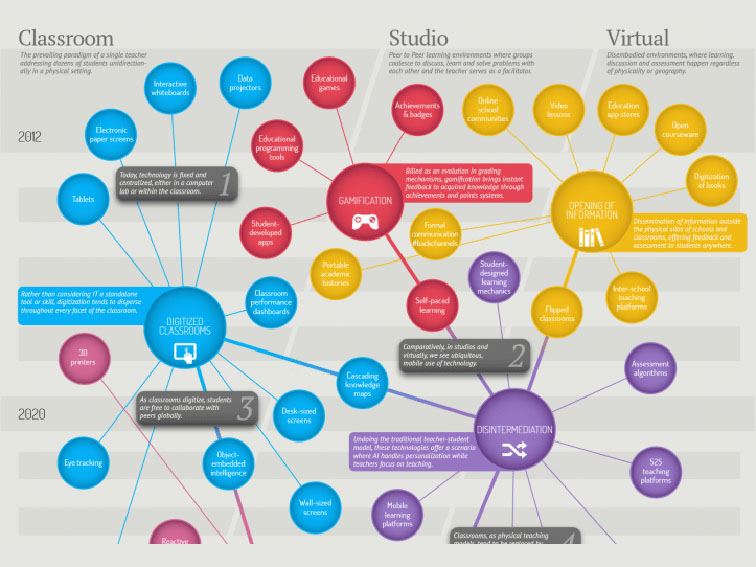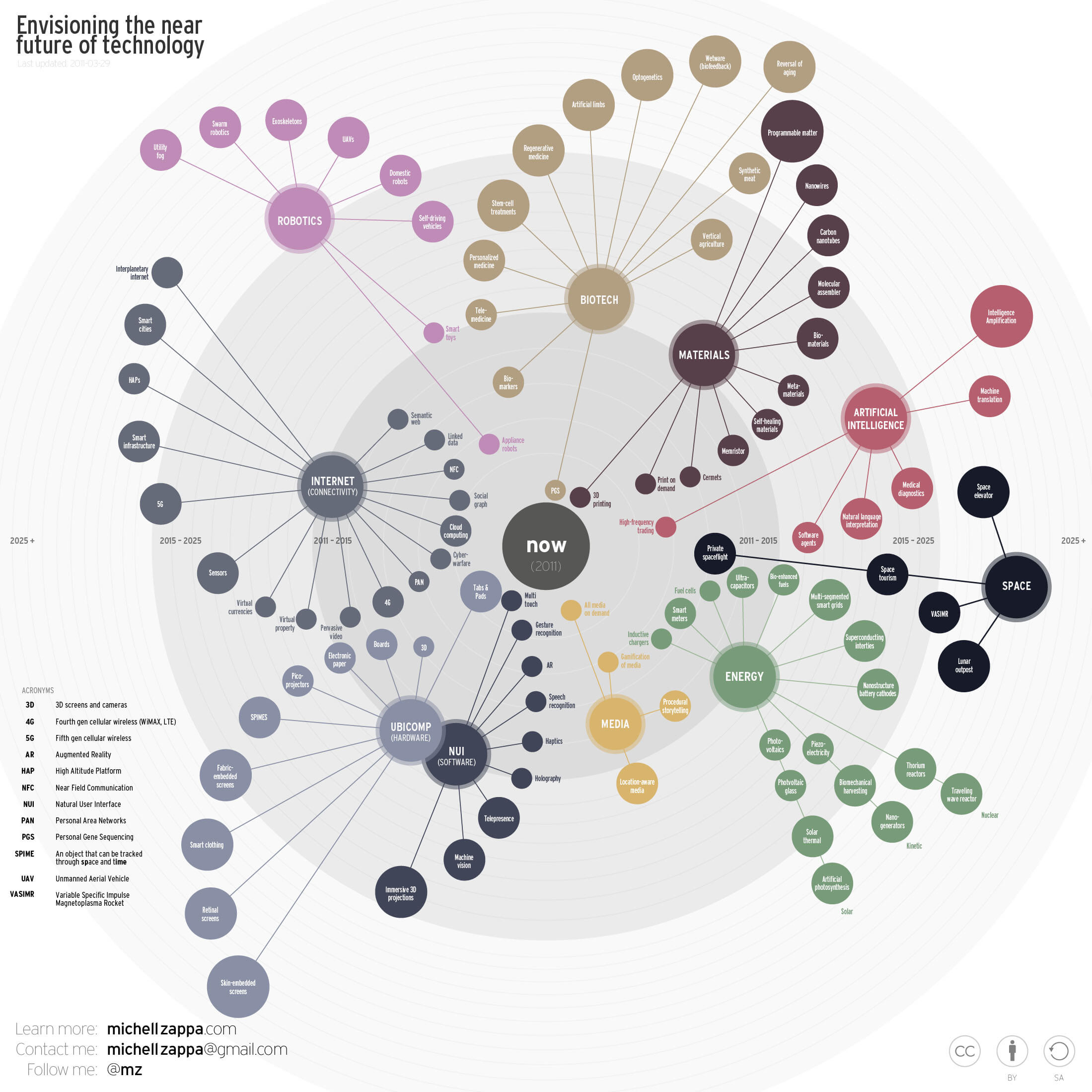
The Benefits Of Mindmapping For Learning: Drawing Ideas
contributed by Andrew Sperl
Developing your teaching methods to be more effective is an everyday process for educators around the world.
In the same way, students everywhere continue to work on methods that will help them learn more efficiently so they can be successful in school. With competition increasing and pressure to get into a good university and land a dream job mounting, it is more important than ever for students to be able to get a handle on their education. However, traditional and older methods of teaching and learning do not have the same level of success for every student. Mindmapping software enhances study skills for students and allows them to look at material in a way that is easier to process and retain.
Discovering the best way to reach a student, or the best way to absorb material, is essential. While some individuals learn best from taking notes during lectures, others do when they are able to put down all of the information they know and their ideas graphically. This allows them to visualize their thoughts and the material they are trying to master. It can even be one of the man ways to demonstrate learning. Students and educators can use software to easily work through mindmapping techniques so that they have a better connection with what is being taught. Here is more information on how this software can be used in the education field, and the benefits it has on users.
What Is Mind Mapping?
Mindmapping is a strategy that helps students study and professors teach course material. A mindmap is a diagram that is used to visually outline information. One of the most common types of mindmap is a large brainstorming web where a central word or idea branches out into related subjects. As ideas are fleshed out and connect to one another, you can see how concepts tie together to get a better understanding of what you are trying to study.
By using words, pictures, and diagrams, you are able to organize your thoughts in a way that helps you follow your train of thought when you come back to study further. Using a combination of words and pictures while studying is six times more advantageous for remembering information than words alone. Mindmaps differ from other forms of outlines by removing their linear nature and instead positioning information in a way that is more natural for the brain to process and retain.
A mindmap contains a number of essential elements that make it a unique tool for students and educators. These maps often begin with the main idea, easily distinguishable at the center. Main themes branch out from the main idea before being broken into smaller subsets. As the map grows larger, it will include images or other graphical elements that connect the main themes back to the central idea. Using software allows you to quickly build a mindmap on the computer rather than having to draw it out and design it yourself on multiple pieces of paper. Mindmapping takes a conceptual approach to teaching and learning, and helps students visualize a subject and understand how various ideas are interconnected in both the theoretical and practical senses.

(See also Mind Map templates.)
What Are the Benefits of Mind Mapping?
Mindmapping software offers both students and teachers a number of benefits relating to presenting and understanding information. As noted by the BBC, mindmaps are “highly effective visual aids that enable students to group together different ideas and enable teachers to present ideas visually and assess their students’ conceptual development and understanding.”
In addition to seeing information in a way that helps students remember more of what they are being taught, they are also able to increase their critical thinking and/or memory skills (and thus correct the deficit in critical thinking). Long after their days of cramming for finals are over, the skills they sharpen by using mindmaps will translate to their professional lives. For students that rely on visual learning methods in order to complete projects and study for exams, mindmaps make it easier to communicate thought processes so their teachers and classmates can better understand their ideas.
By using software to create a mindmap, students are not limited to the space available on paper. Instead they are able to develop collapsible branches off of their main idea and constantly move items around as needed. This feature keeps the mind working, and the creative juices flowing, so that students can continue to build their ideas without distractions or interruptions. Students are able to stay current on assignments, collaborate more easily with classmates, and create news way to communicate ideas publically (e.g., through presentations).
In addition to assisting students with learning new concepts and working through difficult problems, mindmapping also directly benefits their teachers and professors. Not only can educators use mindmapping to lay out lesson plans and prepare lectures for a class, they can also use it to foster creativity among students. This technique allows teachers to show students a new way of thinking about and tackling problems, as well as a way to create discussion and debate about a topic. For example, a high school history teacher could have students use mind mapping to develop arguments for the North and South prior to the Civil War.
Mindmaps also allow teachers to gain insight into their students’ thought processes and see the development of their work. This allows them to assess strengths and weaknesses, while also monitoring growth. Teachers are also able to see where they can use targeted lesson plans for individual students, or as a group, to provide additional resources and information that helps them learn the material.
How Can We Use Mind Mapping in Education?
Mindmapping has numerous uses in education and is being used by students and teachers alike. While many students choose to develop a mindmap for a particular assignment, others find that segmenting all of the information they’ve learned over the course of a semester best helps them remember the material before a final exam. Here are some ways that students and teachers can use a mindmap to improve their productivity.
Taking notes. It can be tough to remember everything a professor says during a two-hour lecture. Mindmaps act as outlines that help students remember the overall themes of a topic, all the way down to the smallest details they’ll need to recall later.
Project planning. Have an essay coming up or a presentation to your class? Mindmapping allows you to organize your time and thoughts so your work can be completed one step at a time. Easily communicate your talking points with your audience. When you use software, you can distribute your mindmap to the entire class so they can see how your points relate to one another.
Problem-solving. Both teachers and students come across problems that need to be solved over the course of a class. Mindmapping helps you see the various options ahead of you so you can find the solution that is best for the problem. An example of this is a logic puzzle that has many methods of solving it, but only one correct solution. A mindmap keeps your work in order so you can access the information you need.
Not only does mind mapping help a student understand a theory or write a term paper, it can also help him or her learn a new language. You can learn more about the benefits of using mindmapping software for education by visiting iMindQ’s official website at http://www.imindq.com.
Sources
- http://lifehacker.com/how-to-use-mind-maps-to-unleash-your-brains-creativity-1348869811
- http://www.bbcactive.com/BBCActiveIdeasandResources/UsingMindMappingTools.aspx
- Future Technology image via Michelle Zappa
